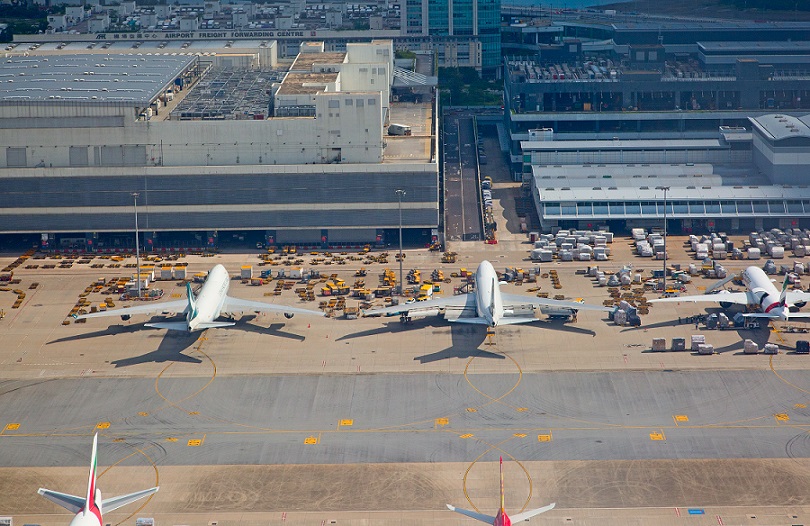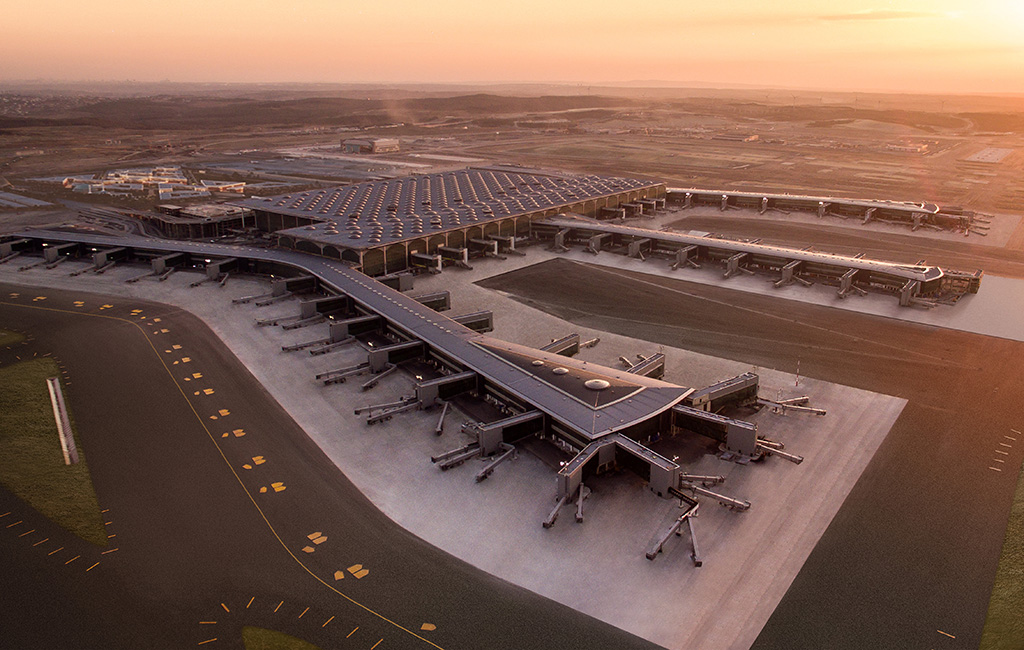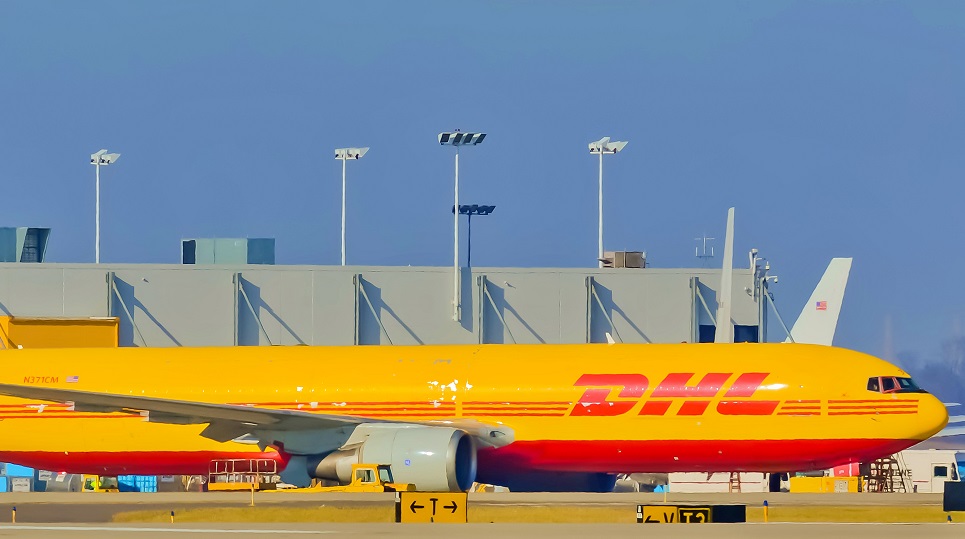
Airport Council International (ACI) World’s latest annual dataset indicates an overall decline in air cargo traffic for 2023, while cargo traffic remains concentrated in the world’s main hub airports (see the top 20 table at the end of the article).
Global air cargo volumes are estimated to have decreased by 1.8% year over year in 2023 to reach 115m tonnes and there was not too much movement at the top of the table for the 20 most busy cargo airports in the world.
Hong Kong processed 4.3m tonnes of cargo and retained the lead spot, with Memphis and Shanghai Pudong placing second and third with 3.9m tonnes and 3.4m tonnes respectively. Anchorage came fourth, handling 3.4m tonnes during 2023.
Growth was led by airports in China. Shanghai climbed from fourth place in 2022 to third, which is where it stood prior to the pandemic. Meanwhile, Shenzhen, which was 24th in 2019, climbed four places in 2022 and remains in 20th position.
Guangzhou Baiyun International, meanwhile, rose from 15th (2022) to 11th in the list. The airport having ranked 17th in 2019, this is a fairly substantial jump compared with pre-Covid times, and perhaps partially reflects the strong growth in Guangzhou’s passenger flights as China has finally reopened.

Guangzhou Baiyun International Airport. Photo: Chintung Lee/ Shutterstock.
Guangzhou saw a rise of 71.1% in aircraft movements; this will naturally have brought with it an increase in belly capacity for cargo. Plus, freighter services have increased; the addition of Etihad Cargo’s weekly link with Abu Dhabi last year is one example.
Similarly, Shanghai recorded a 112.3% year-on-year jump in aircraft movements in 2023, and the 2024 summer-autumn season saw the gateway expand its services still further – including the resumption of flights to St Petersburg and Novosibirsk in Russia and new routes to Athens and Riyadh, plus an increase in flights to Los Angeles, San Francisco and Detroit, all providing additional belly capacity for cargo.
“In general, the current state of the Chinese economy reflects strong international demand for its goods,” says Diederik Meijerink, senior director, data and analytics at ACI World.
“In addition, [given] China’s growing e-commerce demand, strategic investment in airport infrastructure, and growth of free trade zones and bonded warehousing, coupled with the international recovery of belly cargo capacity and shift in aircraft mix and fleet modernisation, it is possible that more Chinese airports will enter the top 20 air cargo rankings in 2024.”
Regional pattern
Middle Eastern gateways, too, have seen a revival in their passenger traffic, with a consequent increase in belly capacity. In terms of cargo volumes, Doha (Hamad International) moved from 11th to eighth (back to its pre-Covid spot), while Dubai shifted up one spot to 17th. After suffering a 25.5% drop in cargo volumes in 2022, when it slipped from 13th to 18th place in the ACI World list, Dubai is now slightly closer to the position it occupied before the pandemic (seventh).
Elsewhere in Asia, meanwhile, Incheon dropped from sixth to fifth place (so, back to its 2019 position); Tokyo was down from 10th to 12th (it was 10th in 2019 too); Singapore fell two places to 18th (the airport ranked 15th in 2019); and Taipei dropped from seventh (2022) to 10th (it was ninth in 2019).
Several US airports dropped as well: Ted Stevens Anchorage International Airport from third to fourth (it placed sixth in 2019); Louisville from fifth to sixth (fourth In 2019); and Chicago from 12th to 13th (still a few notches higher than its position in 2019 – 18th).
On the other hand, Miami rose from eighth to seventh (having ranked 12th in 2019) and Los Angeles held steady in ninth place (13th in 2019).
As noted above, there was a continuing upward trend for Cincinnati/Northern Kentucky International airport, which climbed from 17th to 13th position (it was 26th in 2019). E-commerce demand is the key driver for Cincinnati’s growth, both DHL and Amazon having hubs there.

Also ranking higher in 2023 than in 2022 was Istanbul, which climbed from 23rd to 19th position.
Istanbul placed 47th in 2019; having opened in June of that year while construction continued, the new gateway has risen fast as passenger flights have increased – while FedEx’s new global air transit facility, due to be completed by November 2024, is expected to “position [iGA Istanbul Airport] as a strategic super hub, not only for passengers, but also for the cargo and logistics sector”, according to the airport’s former chief executive Kadri Samsunlu.
Finally, European airports in the top 20 numbered two: Paris CDG, which dropped from 14th to 15th (11th in 2019), and Frankfurt, which fell three places to 16th (two spots below its 2019 ranking).
Thus the regional pattern among the world’s 20 busiest airports appears to be broadly that China’s gateways are gaining ground at the expense of big hubs elsewhere in Asia Pacific. The picture is mixed in the US, while Middle Eastern airports are picking up and Europe’s top cargo gateways are slipping.
“However, whatever position in the rankings an airport occupies, each is integral to the communities it serves,” Oliveira points out. “Airports are resilient, adaptable and support social and economic development.”
Overall performance
The 1.8% increase registered in 2023 is a substantially better result than that predicted in ACI World’s report in 2022, when the organisation said it was anticipating “a year-on-year drop of 6-8% in cargo traffic – not because of a reduction in demand per se, but because of the supply chain disruption, war, airspace constraints and other tensions that are affecting trade”.
Still, the volume of air cargo moved in 2023 was 4.9% lower than in 2019. Former ACI World director general and chief executive Luis Felipe de Oliveira says that in addition to the various geopolitical factors affecting air cargo volumes, “it is important to remember that the sector is recalibrating from the historic highs of the past few years”.
A report from McKinsey & Company observes: “During the pandemic, robust demand for air cargo was initially driven by protective personal equipment (PPE) and medications, and later by challenges in the ocean-shipping supply chain and strong growth in e-commerce sales.”
That unnatural spike in demand was followed, naturally enough, by a drop in overall volumes following the pandemic, although the e-commerce sector continues to grow and benefit those gateways set up to meet its needs.
Concentration
Cargo traffic is still concentrated in the world’s main hub airports, ACI World says. Although, air cargo volumes in the top 20 airports, representing around 42% (47.9m tonnes) of global volumes, dropped by 3.2% in 2023 year over year – but, says ACI World, they “kept a gain of 1.6% versus 47.1m tonnes in 2019”.
According to Meijerink, this is due to the infrastructure, strategic trade locations and capacity for efficient handling of large volumes that the larger hubs can offer.
“This trend has persisted over recent years, despite the growth of global e-commerce and the increasing demand for rapid, reliable transport,” Meijerink says, adding that a review of the top 20 global airports over the past decade reveals little change in the rankings.
“One notable exception is Cincinnati/Northern Kentucky International Airport (CVG), which has risen from the 36th busiest airport in 2014 to 14th in 2023,” he points out. “CVG’s growth is largely attributed to strategic partnerships with Amazon Air and DHL, its central location near key markets, and substantial investments in infrastructure to accommodate the surge in e-commerce and logistics demand.

DHL plane at CVG. Photo: RDNichols/ Shutterstock
“Smaller airports are beginning to establish themselves in regional cargo and e-commerce logistics, though. Their proximity to specific industrial areas allows them to provide fast local services, thereby alleviating congestion at larger hubs. This shift is driven by the increasing need for regional flexibility and quicker delivery times.”
So, smaller airports are gaining importance in niche and regional operations – but challenges such as limited capacity, fewer international connections and higher per-unit costs prevent them from significantly competing in long-haul international cargo, and major airports continue to dominate the market.
Resilient market
Meijerink says that the market was resilient last year: “In 2023, while cargo volumes experienced a slight contraction compared to 2022, the air cargo industry showcased remarkable resilience,” he says. “Global cargo traffic reached 115m tonnes, surpassing expectations and exceeding ACI’s forecast of 111m tonnes by 3.4%. This performance is a promising sign that the industry is on a path of gradual growth.”
Looking ahead, the latest ACI World forecast predicts a robust recovery, with global cargo volumes expected to reach 121m tonnes by the end of 2024 –nearly back to pre-pandemic levels. By 2025, the outlook brightens further, with projections suggesting an increase to 126m tonnes, reflecting a 4.8% growth over 2019 levels.
“While uncertainties in global trade policies and geopolitical tensions could present challenges, the overall trend is one of optimism. The air cargo sector is regaining its momentum and is well positioned for continued recovery in the coming years. This resilience and upward trajectory signal a bright future for the industry, inspiring confidence as it navigates the evolving landscape ahead,” Meijerink concludes.

Source: Airport Council International (ACI) World
Airline perspective
IATA’s statistics for last year give rise to a similar tempered optimism from the carriers’ point of view.
“Despite political and economic challenges, 2023 saw air cargo markets regain ground lost in 2022 after the extraordinary Covid peak in 2021,” says Willie Walsh, IATA’s director general.
“Although full-year demand was shy of pre-Covid levels by 3.6%, the significant strengthening in the last quarter is a sign that markets are stabilising towards more normal demand patterns. That puts the industry on very solid ground for success in 2024.
“But with continued, and in some cases intensifying, instability in geopolitics and economic forces, little should be taken for granted in the months ahead,” he adds.
Top 20 Cargo Airports: Hong Kong leads the way in a tough 2022
Discover more from reviewer4you.com
Subscribe to get the latest posts to your email.





